Straddling the border of Peru and Bolivia lies the impressively large, sacred and cultural Lake Titicaca. This lake is where the mythology of the Inca begins. It is this lake that centered pre-Inca cultures like the Aymara and Puraka. Most tourists come for the the scenery of the lake. Some come for the culture. But we were coming for a literal drive by.
We booked a big 24 hour Cusco – La Paz bus trip, with a couple Lake Titicaca excursions built in. We departed at 9:00 at night, and had a very rough night on the bus. This bus was no Cruz del Sur, whose large reclining seats we had become used to. Instead, its small semi-reclining seats. Oh well.
We arrived in Puno around 6:00AM, and had a quick eggs and bread breakfast. From there, we were paraded onto a small boat, to check out the Uros Islands.
The Uros Islands are a set of man-made floating islands, made out of reed and other floating sea grass. They were originally created 800 years ago, as a way for the Uros people to escape slavery. Each island will only last about 50 years before it decomposes away. A fresh later of reed and straw is placed on the ground 2-3 times a month.
We met with Leonidas, the president of one section of islands. There are over 1500 people that live on well over 100 islands in the region. He gave an explanation of island creation in his native Aymara language, which was translated to English and Spanish by our guide.
From the information we gathered from the locals and our guide, life on these islands was and is hard. The historic main trade was catching fish and seabirds for food. They would then trade some of it for vegetables on the mainland. Nowadays, diesel fuel has destroyed the fishing in the local area (and the drinking water from the lake), so the main source of income for these islands is from tourism. Many islands have set up hotels for foreigners to stay in. Leonidas was also getting paid for the tour.
The birthrate on the islands has plummeted to around one child per family. Previously it was near seven, but there wasn’t enough resources on the islands to support the population. Many children then moved to the mainland (Puno generally) to get an education and live where there were more resources. The children on the islands ferry to Puno every day for their school.
The islands were cool, and the hour spent on them was long enough to see what they were about.

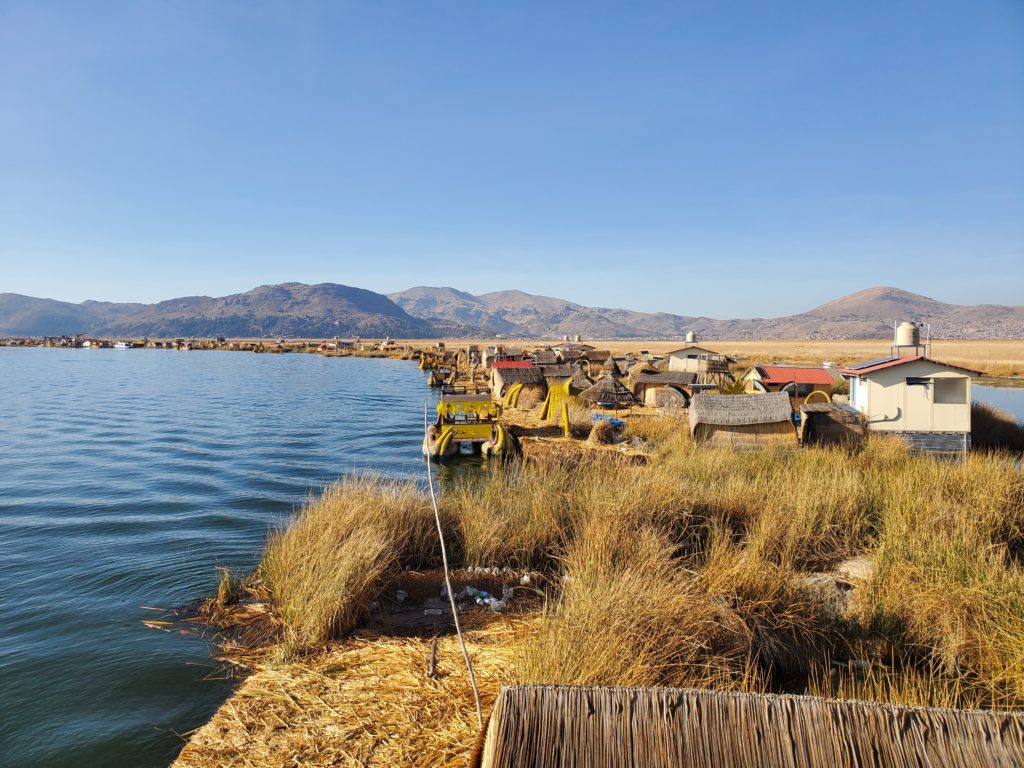

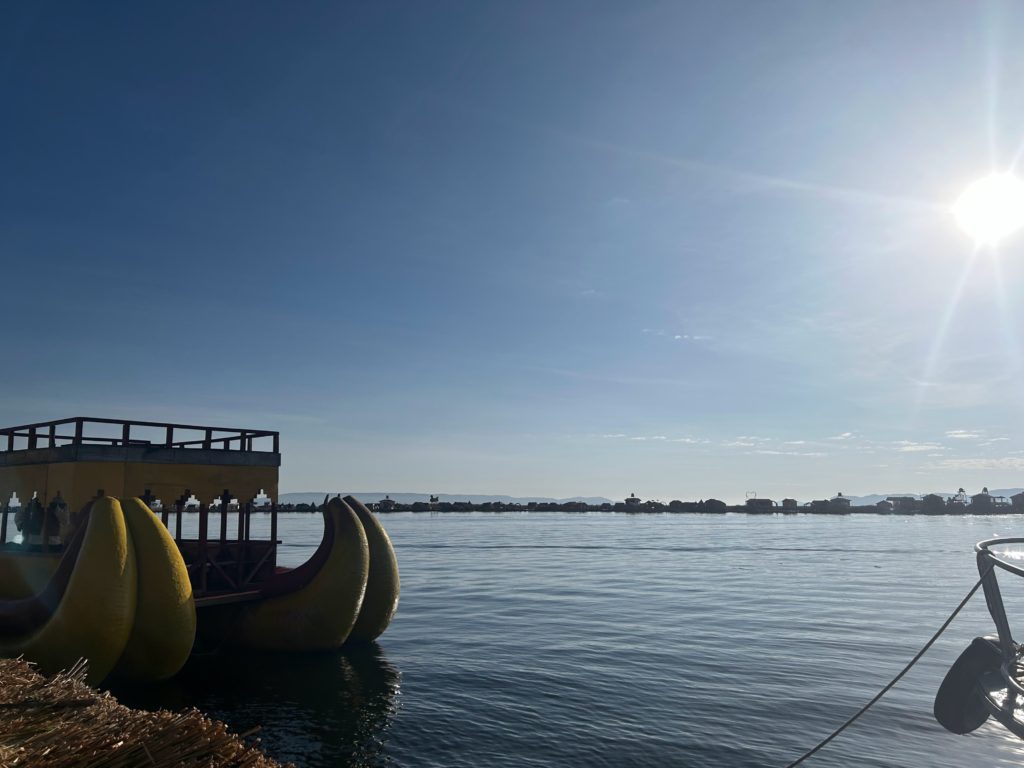
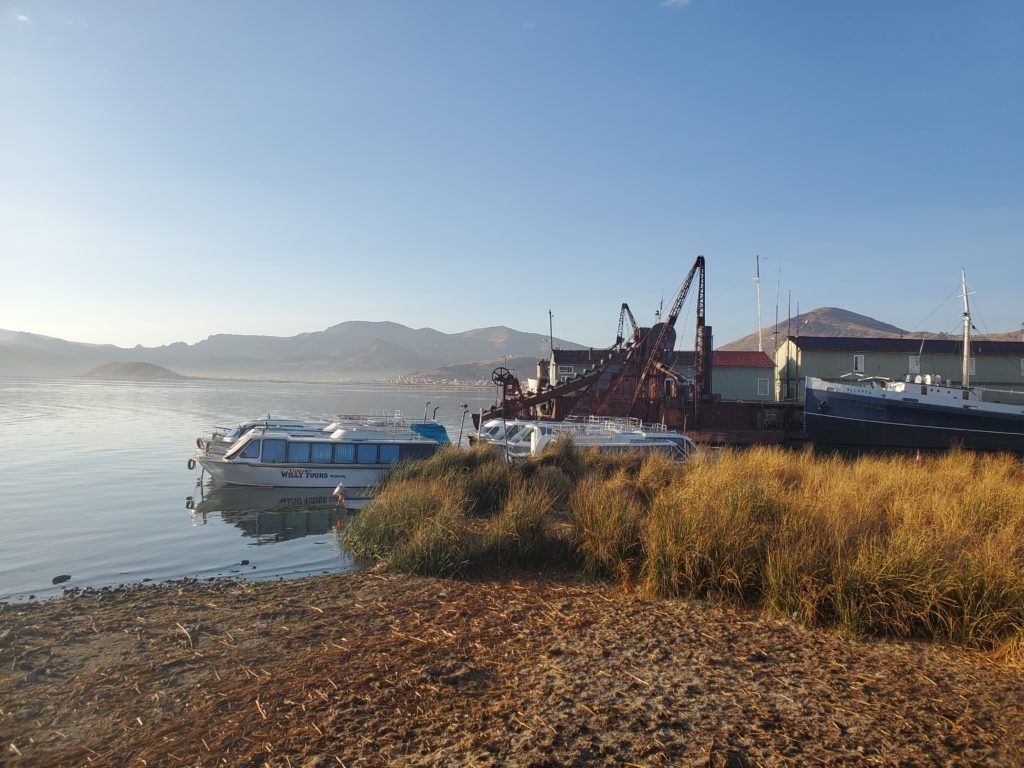
The next stop on our journey was the Peru-Bolivia border. This crossing was fairly easy for us, as Canadians do not need a visa to enter Bolivia. Some Americans had a bit of trouble though. We had to physically walk across the border, as there were some employment laws, meaning we had an entirely new bus crew on the other side. We got back in the bus, and headed for the Bolivian side of Lake Titicaca.
The main hub for Bolivia here is the town of Copacabana. It’s as sunny and beachy as all of the other Copacabana’s around the world, but without the rich pizazz. A tour to Isla del Sol was offered by the bus company, but we opted to stay on land. We have learned that if we have a bad sleep, our stomachs do not like to agree with us, and 2.5 collective hours on another boat did not sound fun. So we hung out on our restaurant balcony, and completed as many new country errands as we could.
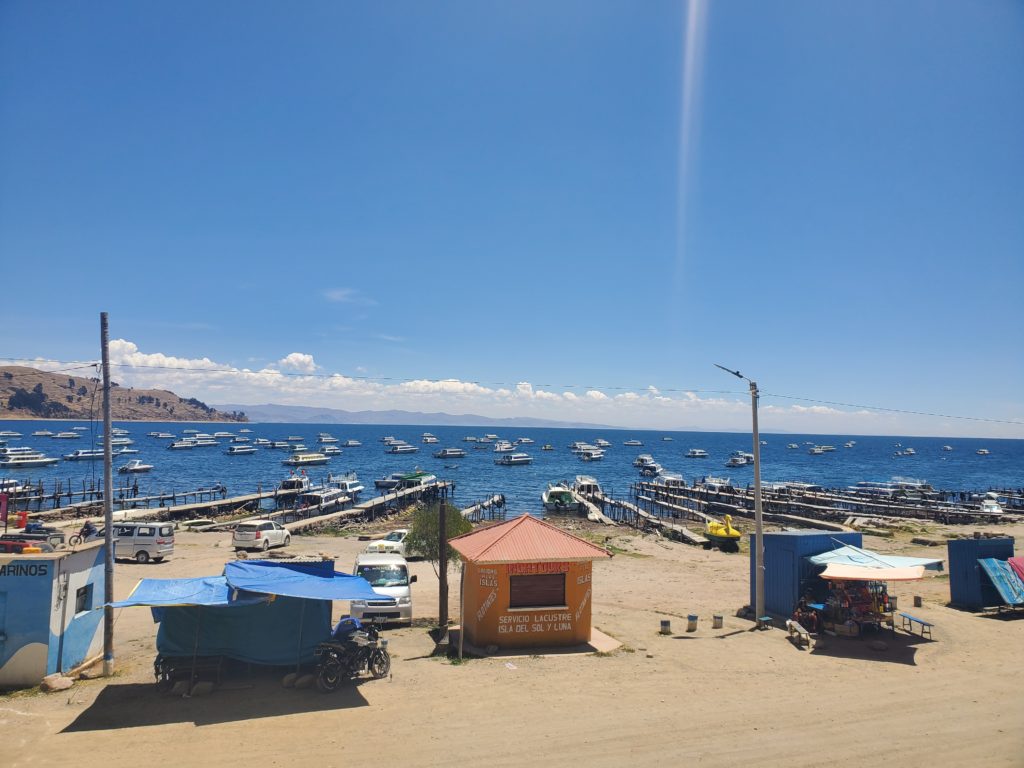
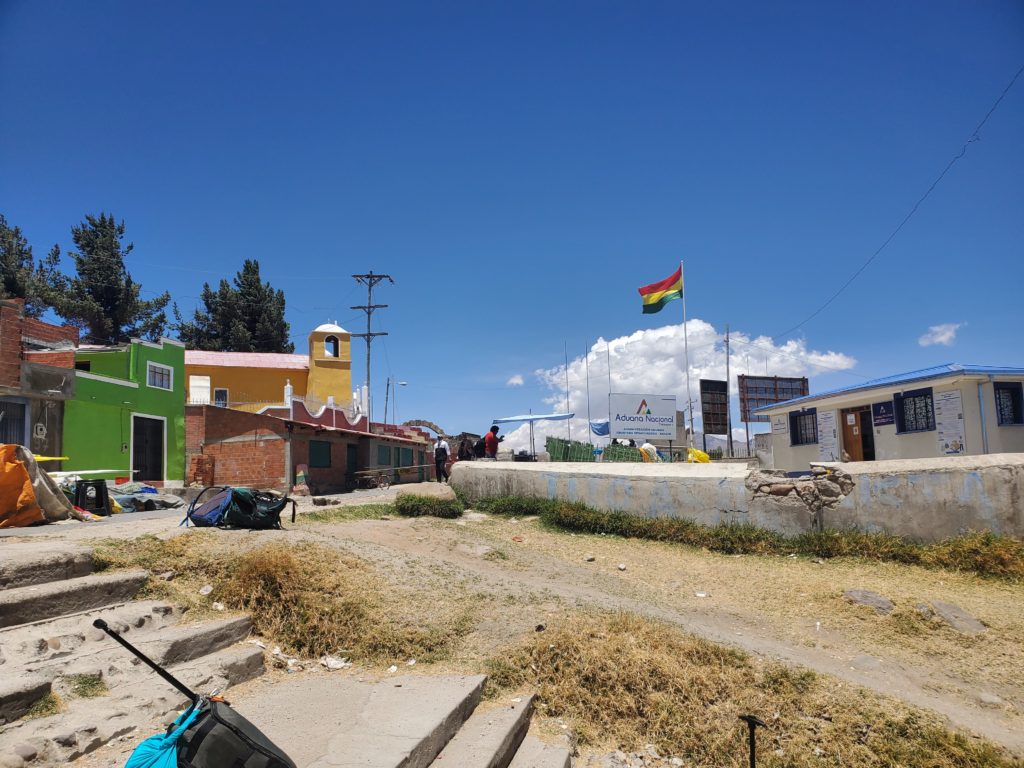
Finally we were off to La Paz, our final destination on this trip. But the final bus ride was anything but ordinary. The sunset over Lake Titicaca was brilliant. But then the sun went down, and we were all told to get off the bus.
Ferry crossing. But this isn’t BC ferries. This is the Bolivia boys. We all got on a little motorboat, with one man driving by turning the motor. The lake was somewhat choppy that day. It was dark out, we had no lights at all (Mark, you would have lost your mind). The bus came separately, on a shoddy looking barge. But we all made it across safely. On the bus behind us were the Banda Internacional Poopo, a famous Bolivian band, who were coming from somewhere. They loved their street food chicken.
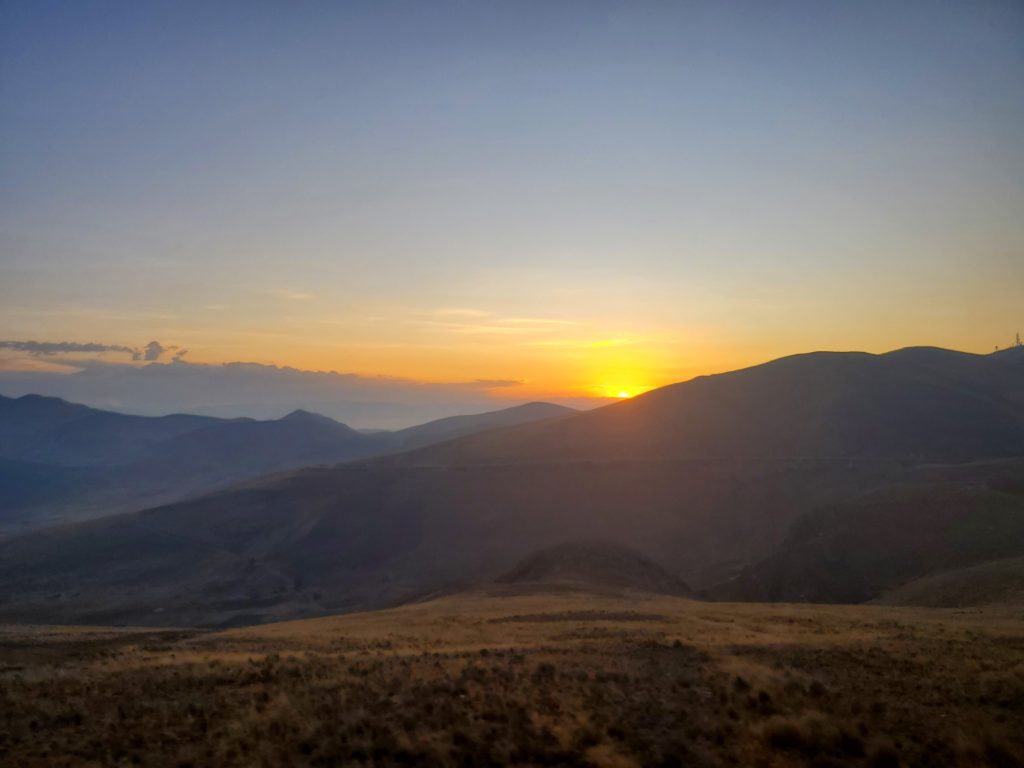
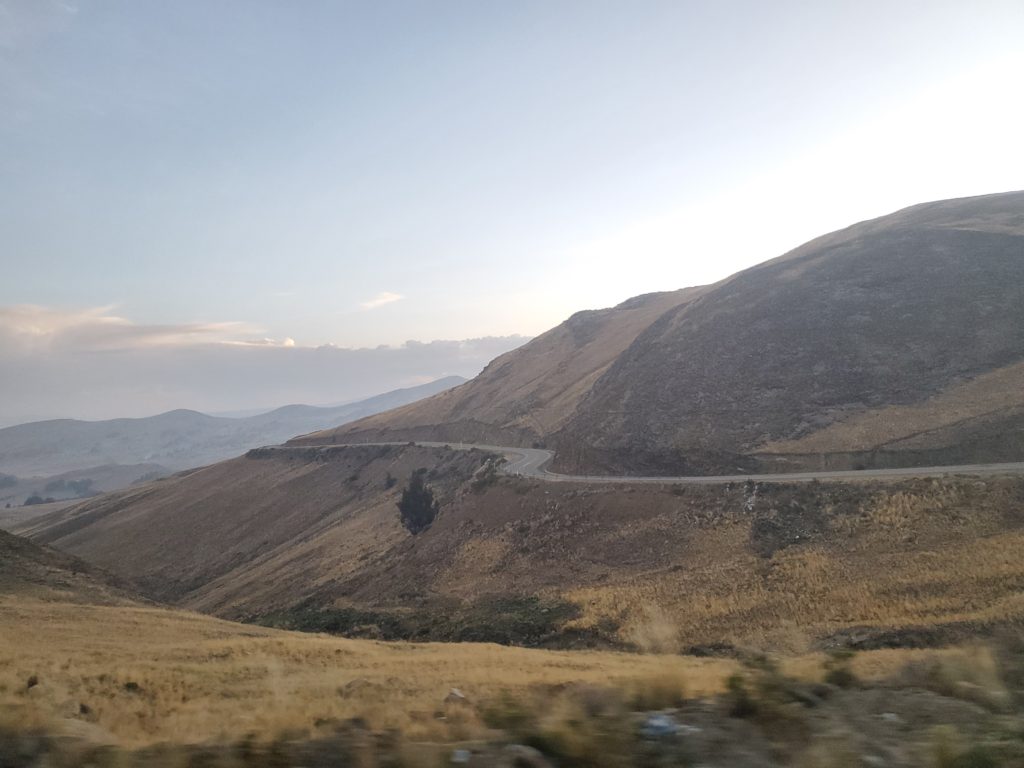
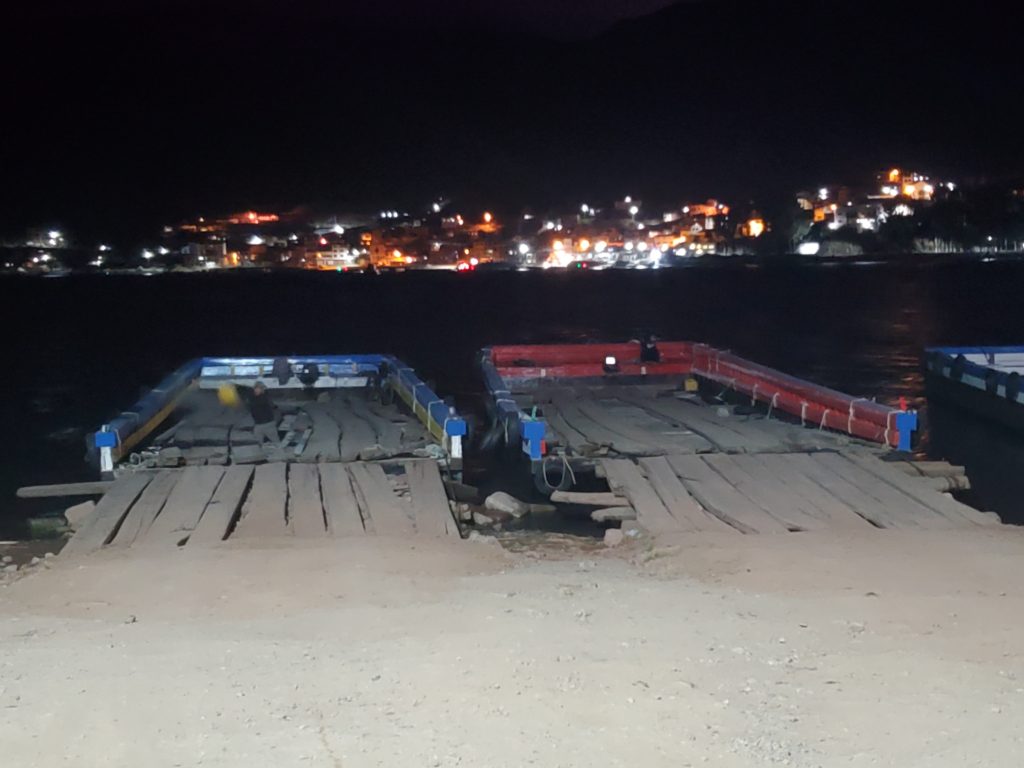
We arrived to La Paz around 10:00. We got dropped off at our hostel, which was nice. The city looked gorgeous at night. You could see how it was been carved into the mountainsides, following old river valleys. But we will explore that later. It’s time for bed now. See you tomorrow!

Beautiful. Will await for more details to come!
The ‘ferry’ sounds almost fun, not the night trip you were hoping for. Titicaca, a lake above the tree line is photogenic. You probably barely notice the altitude now, good trip.
Floating Islands?? I can’t imagine it! And they can build hotels and structures on these man made islands?? Unreal!! You are having quite the memorable experiences.! Continue to enjoy and stay well! Always great to hear. God Bless!